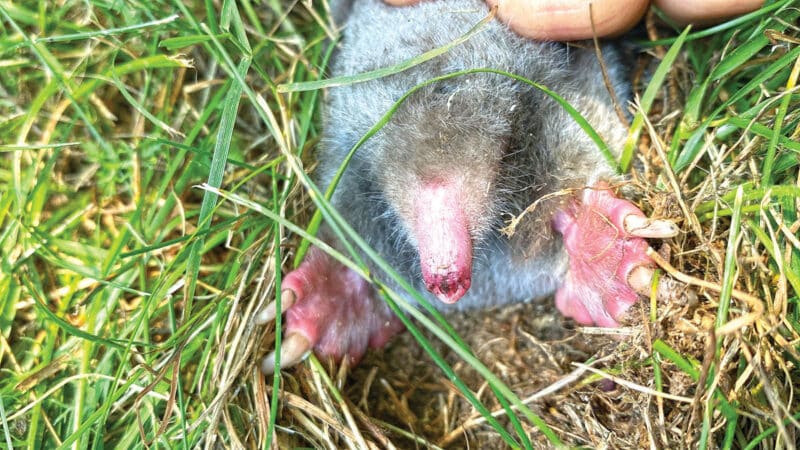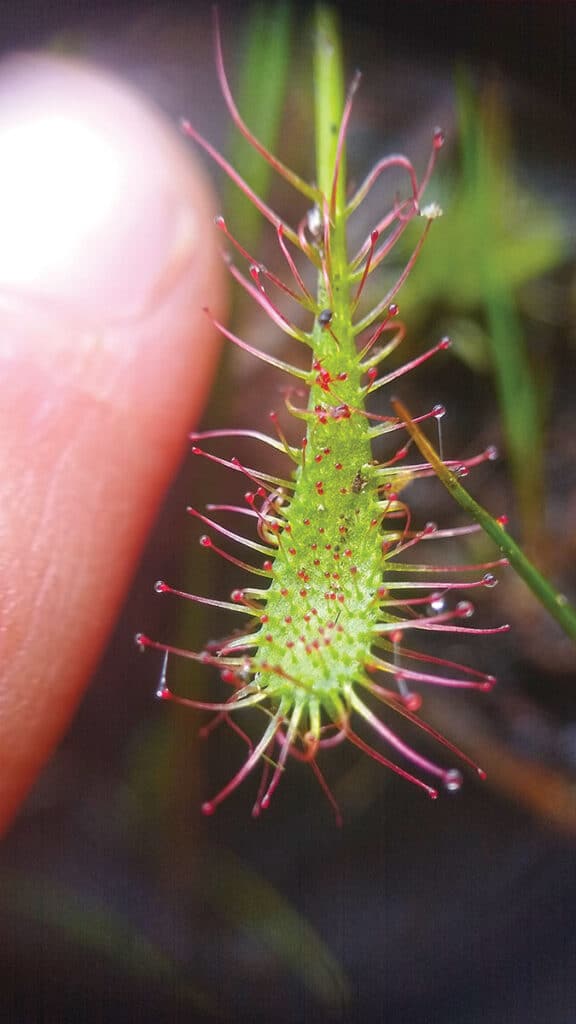by Dr. Sarah Treanor Bois, PhD
Director of Research & Education at the Linda Loring Nature Foundation
Nantucket is known for many things, and, for many, the island’s natural beauty rises is top of the list. This year, the Nantucket Land Council and the Linda Loring Nature Foundation again teamed up for the July BioBlitz—a month long treasure hunt cataloging all living things on Nantucket.
We’re reflecting this week on what we found during the 3rd annual BioBlitz, highlighting some of our favorite species. We’ll also see which made the number one spot for most observed plant, animal, and insect and who was our top observer.
For those who didn’t participate, you can read an article I wrote last month (yesterdaysisland.com/count-everything/) which has more of the “how-to” details. Basically, a BioBliz is a mad dash in a specified area to catalog as many species as possible. The 2022 NLC/LLNF BioBlitz sought to document the biodiversity of Nantucket during the month of July, when the growing season is at its peak—a perfect month for a BioBlitz.
Using the iNaturalist app, participants took photos of any living thing and uploaded them. Sometimes people knew what they were looking at and listed the identification. Other photos were entered as unknowns and later identified by experts and naturalists in the field, strengthening observations to “research grade.”
Despite the almost complete lack of rain, this past July was a perfect month for a BioBlitz. Many plants were blooming, fruiting, and just growing in the summer sunshine. Nestling birds were fledging, insects were hatching, turtles were nesting, and the marine life was popping! There was so much to see and record.
Records are still being compiled as participants continue to enter their observations. As of this week’s press date, there are already 1,680 observations of
more than 650 species. Those numbers will continue to climb as more records are identified.
This year, we had more observers than ever before. Throughout the month, 127 people participated and more than 320 people have identified our Nantucket observations.
In the lead, Trish Pastuszak is the clear winner so far with 225 observations of 184 species. And rumor has it she joined the project halfway through the month. Congratulations to Trish! Watch out for next year when Trish joins from the beginning. You can view the results yourself, peruse the species seen as well as project leaderboard here: inaturalist.org/projects/ nlc-and-llnf-bioblitz-2022.
A majority of the species found were plants (52%), which isn’t surprising since they are very cooperative photo subjects. Insects made up 20% (130 species). Although I am an ecologist and lover of nature, I wasn’t psyched that 20 different species of arachnids were found. Yes, that’s spiders, but it also includes mites and ticks. The coolest arachnid, and new to me, is the Giant Lichen Orbweaver (Araneus bicentenarius) found by hlshaw (that’s their iNaturalist handle). This orbweaver spider has some pretty amazing camouflage mimicking lichen and blending in perfectly with the bark of a tree.
The BioBlitz’s most-observed species was followed throughout the month like a horse race. After different species taking the lead throughout, by the end of the month, there was a 3-way tie between common milkweed, sickle-leaved golden aster, and great mullein. That tracks well with what we’re seeing bloom all around the island. Not surprising, then, the most common insect was the monarch butterfly, seen as both caterpillars and as adult butterflies. These showy, signature species are great targets for documentation.
As expected, the most common species were the most observed. Other common observations include osprey, spotted knapweed (an invasive plant), yarrow (last year’s winner), and horseshoe crabs. Some animals, like eastern cottontail had lots of observations, some of which were as roadkill.
One of my favorite observations was of Spoonleaf Sundew (Drosera intermedia) by “syrinxed.” It was found off of Stump Pond Meander trail. The spoonleaf sundew is an insectivorous plant which attracts insects by secreting a sugary nectar from the leaf blades which are densely covered with stalked mucilaginous glands. Insects then become ensnared by the mucilage and, unless they are strong enough to escape, are suffocated or die from exhaustion. The plant then secretes digestive enzymes and later absorbs the resulting nutrient solution to supplement the poor mineral nutrition of the plants natural environment. So cool!
When looking through the observations, I am amazed by the diversity that people are seeing. I always end up learning a lot, too, about species I’ve never seen before. The Fiery Searcher Beetle (Calosoma scrutator) is a new one for me. It was found by “amymaria” in the Cisco Beach area. The beautiful iridescent rainbow sheen of this beetle made for a stunning image. Looking into it a little more, I learned that this meat-eating beetle is accurately described as “beauty with a bite.” It is commonly called a “caterpillar hunter” and, as the name suggests, they feed on caterpillars and other soft-bodied insects, to the delight of gardeners and landscapers. I am glad however that this wasn’t my encounter. The iNaturalist website had another tidbit to add: “The adult beetle is known to excrete a foul-smelling oil when it is handled. The oil has been described as smelling similar to rotten milk or rancid olive oil.” Better seen than smelled.
For mammals, we only had 8 species, which isn’t surprising given Nantucket’s overall lack of mammals. A favorite observation of the BioBlitz, though, was of an Eastern Mole (Scalopus aquaticus) observed by Danielle O’Dell of the Nantucket Conservation Foundation. Apparently, during an outdoor staff meeting, the mole poked its head up through the ground in the middle of the Science and Stewardship staff at the NCF office yard. He may not have intended to join the meeting, but he/she has a great headshot on the BioBlitz page: inaturalist.org/observations/ 127220527.
When you have time, check out the results for more local sightings of beautiful flowers, charismatic birds, and fascinating insects, among others. Since iNaturalist also has the location (unless it’s a rare species) you can also find out where to go to make some of your own observations.
Thanks to all of those who participated for getting out there, making observations, and supporting the Nantucket Land Council and Linda Loring Nature Foundation. Now that the BioBlitz is over, don’t stop observing and documenting. You can use iNaturalist anytime to upload photos and contribute to the information about our island’s biodiversity.
For more information about how to use iNaturalist, check them out at inaturalist. org or view this LLNF workshop: youtube.com/watch?v=hbwLjGeHPZk





